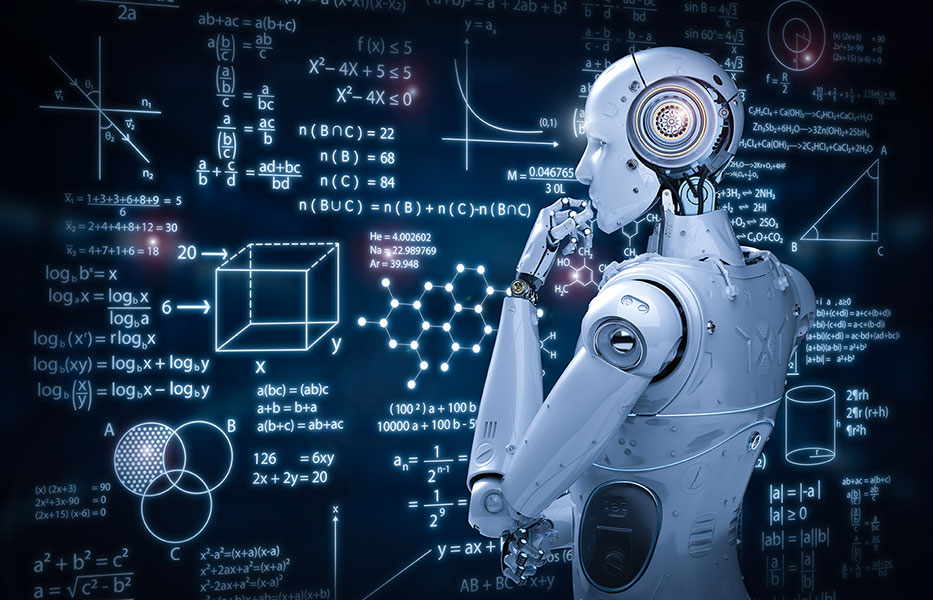QUESTIONS & ANSWERS
- Intelligent automation can take on mundane, repetitive tasks, freeing up workers to take on more creative elements of their work.
- From procurement to healthcare and transportation, the potential applications for intelligent automation are wide-ranging.
- Pascal Bornet, an expert in the field, explains why automation won’t replace all jobs and 5 critical steps to achieve intelligent automation at scale.
Pascal Bornet is a pioneer and expert in the field of intelligent automation – also known as cognitive or hyperautomation. He spoke to the World Economic Forum about the technology and his passion for making our world more human using intelligent automation. An edited transcript of that conversation follows below.
What is intelligent automation?
Intelligent automation is a combination of methods involving people, organizations and also technologies involving machine learning. Intelligent automation is aimed at automating end-to-end business processes on computers. It delivers business outcomes on behalf of the employees working hand-in-hand with them to deliver faster, better, cheaper services. This improves not only the employee experience, but also the customer experience.
When I explain what intelligent automation is, I like to share an example. All companies around the world are performing an end-to-end process, which we call ‘procure-to-pay’ (PTP), which is about procuring goods and services from vendors. Intelligent automation will help, first of all, to select the vendors using machine learning. And then it’s about sending orders to those vendors and how we will leverage workflow platforms, for example.
And then it’s about receiving and processing invoices after the services or goods have been received – and this can be done using natural language processing. And finally, the payment to those vendors. It’s quite systematic and can be done using robotic process automation.
How does intelligent automation help employees and customers?
It helps employees to do work faster, better, but also to have more time to focus on what really matters. For example, insights, comments, relationships, managing their teams because intelligent automation is working for them on the most transactional and repetitive activities. We always say, ‘I don’t have the time to do that because I need to do all this’. Now, we have more time for qualitative work.
The employee experience is critical, but so is the customer experience. Waiting in a queue to get a train ticket, waiting to see a bank agent, all of this can be solved by intelligent automation. More than 90% of customers don’t even bother to complain, and 90% of them will never return. So it’s really a black box here to understand what makes a client satisfied and how to get their loyalty – and intelligent automation is in the middle of this.
How might intelligent automation help in healthcare?
According to our estimation, intelligent automation has the potential to save 10 million lives per year. It can do this by helping to support clinical trials, disease diagnoses and avoiding medical errors.
In developing countries, it can help to reduce deaths from preventable causes as well. More than 1.6 million people die every year from diseases related to diarrhoea, for example. But it’s crazy because we know how to solve it. The issue is those people don’t have access to physicians. Globally, we have a shortage of more than four million physicians. And by enabling remote diagnosis, using smartphones, tablets, those people can have access to the services. And again, here, it’s millions of lives that can be saved every year.
Another example I like to give is an intelligent automation application, like tissue analytics, which helps instantly to diagnose chronic wounds, burns or skin conditions just by taking a picture on a smartphone.
What about transportation?
It’s a good use case in transportation. This includes the identification of and the prediction of where transportation is needed so that you can allocate the right assets and the right trucks in the right place in advance of the need being expressed. And this can be done using machine learning based on past and historical data and then the optimization of the routes that the trucks will take.
In Melbourne, they’ve also sent some drones to capture the traffic at roundabouts on video, to understand the patterns there and help them to design better traffic rules and a better flow of cars and so on, using machine learning.
Will intelligent automation take our jobs?
It’s really about a synergy, I would say, between what the people do and will do and what the machines do and will do. Machines today, supported by technologies such as machine learning robotics, are able to perform any transactional, repetitive tasks very well. But, they need to be trained on huge amounts of data, so it means those tasks need to have been repeated in time in the past many, many, many times.
But machines are not good and will not be good at all for at least the next few decades in tasks such as creativity, relationship building, critical thinking or anything with social skills. So it’s really about us humans focussing on those capabilities that make us different from technology.
Let’s take the example of a physician that is helping review X-rays. Of course, the machine will be much better at doing the job of identifying tumours on X-rays very quickly with high accuracy – better than a doctor. Nevertheless, the doctor will be the best at managing the patient relationship, helping the patient to understand what’s happening, what will happen in the future, managing change and communicating. So that’s really how people and machine work together.
We use intelligent automation to manage small, transactional, repetitive activities. It helps to refocus people on more exciting activities and activities that are also delivering more value for their companies.
https://open.spotify.com/embed/episode/1LAHMLgxbP5BteaSNHul1j
What does the future hold?
The adoption of intelligent automation is quite high. The term was officially coined in 2017, but more than 50% of the companies around the world have already implemented it. That’s going to rise to 70%, according to Deloitte, in the coming two years.
Nevertheless, only 15% have been able to scale these transformations. So today, the key challenge for all companies is about scaling, implementing such technologies across divisions, and across companies within the same group.
RELATED Blue Prism Accelerates Intelligent Automation For Cloud Users On Microsoft Azure
We’ve done our research on the critical success factors to get to scale. The first one is always put people in the centre of those transformations: they are performed by people for people. The second is about management support. The third is about combining the different technologies to be able to automate the most complex use cases. Number fouris about using new technologies, which are commonly called low-code technologies, that help people with no coding skills, no programming skills, to implement intelligent automation in their daily work and improve their daily work by themselves.
Finally, the fifth critical success factor is it’s about using a new breed of technologies that help to implement intelligent automation. Ironically digital transformations are actually extremely human-intensive, extremely manual. But by using technologies such as process, discovery, data discovery, auto-machine learning and others, we are capable of automating a large part of the implementation of intelligent automation so that those transformations can go faster and be broader.
Share




























